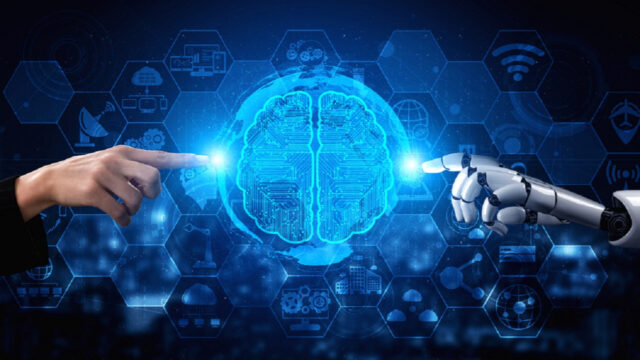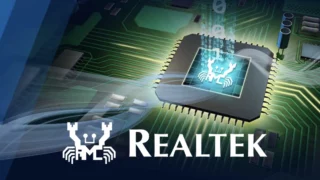We conducted an in-depth interview with Gokul Subramaniam, Country President and Vice President, Client Computing Group, Intel India, on the company’s sustainability efforts and plans for the future. Subramaniam emphasized Intel’s commitment to leading the industry in sustainability, highlighting the progress made towards achieving targets set for energy consumption, water management, waste reduction and greenhouse gas emissions reduction. He also detailed Intel’s sustainability innovations in semiconductor manufacturing and the importance of collaboration with ecosystem partners.

With a focus on consumers and business, Intel aims to reduce the carbon footprint of its products throughout their manufacturing, operational and lifecycle. Efforts to reduce carbon emissions in product design and manufacturing processes, the selection of materials used, increasing energy efficiency and making products suitable for the circular economy are key moves to achieve this goal.
Intel’s sustainability-focused innovations, its efforts to collaborate with other players in the industry, its plans for the future and the steps the company is taking for a sustainable future are discussed in detail in our interview.
What does Intel do in terms of sustainability in general?
Intel is extremely, committed towards sustainability as a company. We are leading the industry in sustainable semiconductor manufacturing, but we don’t stop with just the semiconductor manufacturing. We go farther beyond that in terms of our leadership and
our goals in sustainability.
As vector one, electricty consumption, our goal is to be 100 percent renewable electricity by 2030. And we are already 93 percent renewable globally. We’ve got some very good progress that we’ve made to date.
As vector two, on water, our goal is to reach net positive water globally by 2030. We are already net positive in the United States and in India, but our goal is to be net positive globally on water by 2030.
On waste, which is a third vector, our target is to get to zero waste to landfill by 2030 and we’re making some good progress there. And then on climate, our goal is overall net zero greenhouse gas emissions, which is scope one and scope two by 2040 and upstream scope three by 2050.
We show our commitment to these goals in various ways. We are the first company to actually be part of the overall semiconductor climate consortium. We are the founding member as an industry. We’re very invested in some of the eco labels that we map to our products and how we drive that and work with the ecosystem partners. We’re also partners in the Catalyze initiative, which is driven by Schneider Electric, to make the digital transformation on energy management and automation launched by Schneider. These are on corporate level.
On PCs, clearly we’ve seen both consumers and business clients care about sustainability. Almost 64 percentage of the consumers globally are highly concerned about sustainability. Same 64 percent of IT decision makers. They want to expand sustainability initiative in all of their projects and as high priority. And almost 81 percent of the senior IT leaders are saying they want to reduce the environmental impact, bring more tech related solutions for that.
For Intel and for client computing, one of the key things is we look at sustainability as an end to end lifecycle. We start with manufacturing. We look at operational when the product is used and we look at the retirement or end of life. When we say manufacturing, it’s not just silicon. We’re looking at the entire product as in the entire laptop. When we look at operational, we’re looking at use patterns in the product when it’s used for three, four years, how do we lower the energy when we are using it like this? How do we repair it? How do we update it periodically? And then when it comes to retirement, we look at what are the ways we can recycle and reclaim. So we look at it end to end.

What are the benefits of going after sustainability in both production and usage of desktops and laptops? What kind of benefit does Intel see in that?
If you take a notebook or a laptop today the lifteime of it is around four years. There is almost 120 to 500 kilograms of carbon dioxide emission in the product lifetime. If you take a desktop there is close to 250 to 1500 kilograms of carbon dioxide emission. And our goal is to reduce that.
For PCs, we look at silicon, we look at motherboard, platform, whole PC, how we can build it with lower carbon footprint. We have technologies there that we give to our customers and our partners. And then we also have a lot of tools to tune and optimize the power taken when you run usage models, energy efficiency, so that it lowers the carbon footprint.
So we give a bunch of technologies in all of these phases to reduce that carbon emission so that our customers, our OEMs, can build PCs that are more sustainable.
Which stage of manufacturing is most carbon intensive? And which is Intel is most focused on?
When you’re manufacturing, there is a silicon, there is a motherboard, and then there is a chassis, right? So we play a significant role in the silicon and in the motherboard and in the system, for sure. Now, if you look at it, silicon clearly, you know, having renewable energy and electricity to build it, lowering the scope one and scope two carbon emission, and scope three, we have goals in that as a company in silicon manufacturing.
Intel manufacturing, the foundry plays a very critical role in lowering the carbon footprint at the silicon level. But silicon is only the starting point. The motherboard and the components in the motherboard is almost 65% of the carbon footprint.
In terms of the components that go there, in terms of conflict-free minerals, what kind of minerals can we use there in the board? Like, for example, tantalum is a mineral that’s used for a lot of capacitors. We now have a way to have a motherboard that has tantalum-free capacitors, components that we can give to our OEMs that they can use in their design. So motherboard is another big focus area.
And then as you start to get a little bit beyond the motherboard, Intel also plays a critical role in the power efficiency of the display. How can you lower the power of the display? We have some interesting technologies to lower the power of an OLED panel. A lot of PCs are going to OLED.
When you have OLED, how can you reduce the power? We have some algorithms to reduce the power taken by the OLED. We also miniaturize and shrink the board. So the area of the motherboard is lesser. When you have a smaller board, lesser carbon footprint. When you have fewer components, lesser carbon footprint. So along with the silicon, we give reference design of a motherboard that has lower carbon footprint. We give display recipe to lower the power of the display. And so those are some very good examples of how we’re reducing the carbon footprint at the manufacturing level itself.

Do you have any influence on the partners you work with to implement a sustainable production cycle? Do you convince them to use some of these production cycles?
As Intel what we do is when we build our reference design, we take the silicon and we try to build it. I will take an example of the motherboard that goes into a laptop. We try to build a motherboard in a way that we reduce the carbon footprint. It includes our processor and many other components. So when we make the component choices, we try to make sure that is fewer components, smaller motherboard. We make sure that it has conflict free minerals based components in there.
We take all of that and then we build a reference. We share that reference to all our customers and ecosystem partners so that they have a starting point that we have shown. And we don’t just give it bot also measure that because a lot of sustainability and carbon footprint is about how do you measure? What kind of targets can you achieve? So we share our methodology, our design principles and the result of the reference design with what tools we used to measure it. And we give it to the ecosystem partners, which they leverage. They use their supply chain, pick the right recipes and go after it.
Do we share our practices with the ecosystem partners? That’s a big part of it. We are a part of certain consortia on how you measure carbon footprint at the board level and system level. For example, PAIA is a industry consortium. We are part of that working group, giving input into how you measure. We are also part of a working group that with the customers and ecosystem partners trying to build that. We have a sustainability lab, which Intel has for the entire product. We measure and we give feedback to the vendors. We give reference designs to our customers and ecosystem partners. So it’s a very collaborative effort. And we try to make sure that we can learn and give our learnings back to the industry. And that’s what we do.
Do you also track if your partners are using your guidelines in their products too?
The industry has certain ecolabels. Ecolabels like EPEAT, TCO, European Union has an ERP lot 3. Every geography has these ecolabels that has certain certification mechanism for you to measure whether it is done or not. Instead of us doing it, we align with our customers. We give the reference. Customers use the reference and build their products. Sometimes they’ll take some of what we’ve given. Sometimes they’ll have their own stuff because they have their own supply chain.
But then we also show with our eco label what level of grade you can achieve for eco certification. Like for EPEAT, there is a gold, silver, bronze labeling system. We give our reference design that’s gold. For example, on Meteor Lake, we have achieved some significant accomplishments in terms of what level of EPEAT we can achieve with EVO designs.
So I’m just trying to give you a real number here. On EVO designs, we were able to beat the EPEAT gold. We were already gold ready in reference design. And many of our customers are able to achieve that level of energy star. In fact, in Core Ultra notebooks, the energy consumption is up to 64 percent lower than what energy star 8.0 stands for.
Do Intel and its competitors have a mutual understanding and plan for a more responsible chip production and manufacturing? Do you talk to each other?
This is a great question. That’s why we are the founding member of the Semiconductor Climate Consortium. Like you said, it’s an industry collaboration. We cannot do this alone. We need partners in a lot of things that we do with the partner ecosystem and beyond just our processors. So as part of that partnership, we are able to drive a lot more of this collaboration.
Moreover our CEO and our company is very committed to driving open industry standards, not just to enable our products, but the entire innovative platform at scale. And that’s what we do. Intel participates in a number of standards and industry bodies to educate the regulators, to develop the criteria. For example, PAIA is a good one where we are part of that consortium to say, hey, how do we measure? What are the pitfalls of measuring? And if we measure, what are the results that we want to get? Similarly for Energy European Union Lot 3 and Energy Star and EPEAT, we are participating in all of those and as well as the Semiconductor Climate Consortium, which aims to reduce the industry’s greenhouse gas emission, not just Intel. And so we are very active in those.
We also work quite closely with the education, you know, academia, like MIT and industry leaders to reduce the product level, product attributes to lower the carbon footprint. And so these are some of the ways we are doing it in terms of Ecolabel, industry consortium and academia to be able to bring this down. And the more latest one is we co-founded a program called Catalyze with Applied Material and Schneider Electric to actually accelerate the adoption of renewable energy.
So renewable energy we are already doing and we want to make sure we accelerate that adoption as an industry so that we can reduce the overall carbon emission throughput globally across the semiconductor value chain. It’s not just the chip manufacturing, it’s the chemicals, it’s the foundry, it’s the whole value chain. So we are also part of those consortiums.
In the future, do you have new plans about sustainability? Are you going to introduce new practices or new materials or new production cycles to the industry to get us greener?
Absolutely. So let me talk to you about two specific things. Intel launched the Intel Core Ultra and it had three big sustainability capabilities in our technologies across the silicon platform and all of the tuning.
Number one, lower system carbon footprint, lowering the embodied carbon footprint through ecosystem enablement and co-engineering. So Core Ultra has technologies that lowers the system carbon footprint.
Number two, energy efficiency. When you’re using the laptop for real life applications, how you can improve the energy efficiency through our platform architecture, how we give the tuning tools, how Intel works with the OS vendors like Microsoft and others, how we work with the independent software vendors to optimize the software so that when you run those applications, you lower the energy.
Number three, circularity. So when you get to the end of life or when you get to retiring a product, how we can make sure that we can bring in capabilities to erase the content, be able to repair and bring it back into a second life.
So with Core Ultra, for all these three vectors, we have specific platform technologies that we have driven and we have given out to the industry. Now, as you look ahead, we want to continue to focus on all of these three areas. We’re looking at how we continue to use smaller PCBs, alternate materials, dematerialization, as in remove some materials out so that we can make it smaller and compact, low power components.
Thereby, we’ll reduce the overall manufacturing system carbon footprint. When it comes to operational, looking ahead, we’re looking at more SoC power efficiency, making our processor more power efficient, driving more software optimization, more telemetry to know where more power is being used. We are also bringing AI into the way we tune, predict and proactively manage and repair.
And then on circularity, we’re bringing modular architecture where the board need not be one full. It can be split into two or three so that you only replace the part that you need to. Like if you have only an IO port that’s not working, you don’t have to replace the entire motherboard. You only replace the IO board. So we’re driving circularity through that.
And the other thing that is, is we continue to work with the regulatory and standards. We are really trying to make sure that we bring in more regulatory compliance, continued collaboration with industry standards and supply chain and the ecosystem to be able to achieve this.
GenAI is the hype at the moment. And as its nature, it consumes a lot of power and affects the sustainability efforts. Do you have any plans or do you have any practices for reducing the energy consumption of GenAI?
Abosultely yes. The thing is, it is not everything is the trillion dollar language model. So we are trying to bring AI more to the edge, more to the PC. Thereby, you don’t always have to go to the network and the cloud. Every time you keep going, you’re again burning more carbon footprint.
Number two, when you’re doing it on the PC, our architecture allows you to use CPU, GPU and NPU. So we just send to central processing unit, graphics processing unit and the neural processing unit. The reason why we have these three in the SOC is because it gives you lower power depending on what workload you want to run. You can run it on the NPU, which gives you the lowest power and the maximum energy efficiency. So we have an XPU architecture that allows you to run at lower power the AI workloads.
The third is how we use AI in engineering. Some of our tuning tools like Adaptex, it has AI to predict machine learning to predict the workload. Thereby, it uses machine learning to actually give it the lower power place where it can run in the SOC.
Now, going back to server and end-to-end AI, Intel has heterogeneous computing. It’s not a one size fit all. For AI, if you have to democratize AI, it has to be pervasive and everywhere. You cannot give one size, one type of computing.
There are some that happens in the cloud, some that happens in the network, some in the edge and PC. By giving that heterogeneous computing capability, we’re able to apply AI in places where it’s needed and give the computing, maximum computing needed where it’s only needed. Where you need lower computing for AI, you give that capability.














